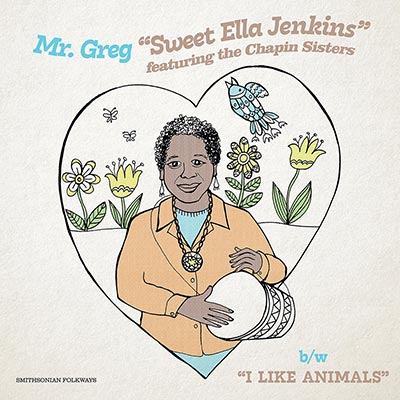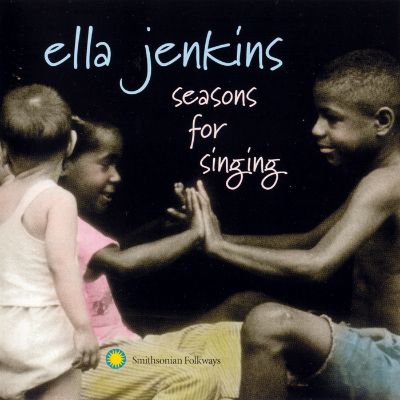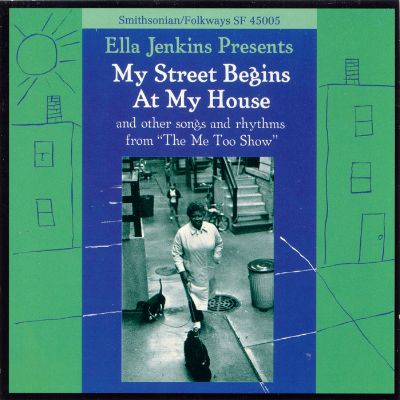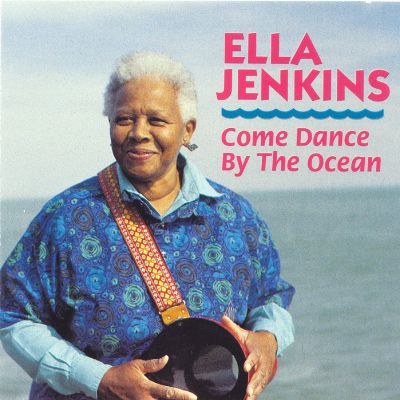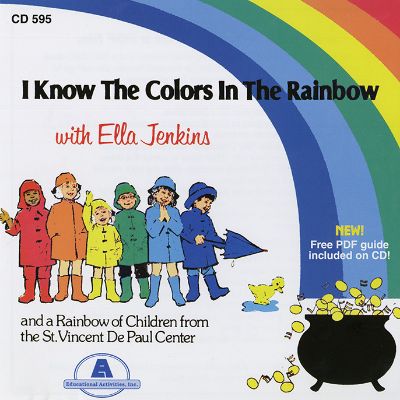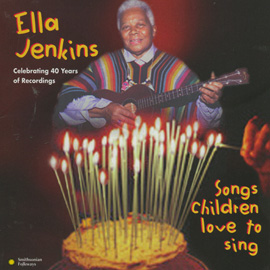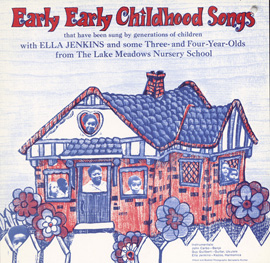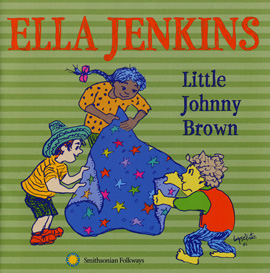Summary
In these three lessons, students will explore the wonders of the natural world to the tune(s) of Ella Jenkins. Students will use Ella’s songs about trees, animals, and environmental stewardship as a springboard for learning about tree types, animal attributes, and ways to care for our earth. Students will engage in a nature walk, observational drawing, sculpting, counting, sorting, classifying, recycling, composting, dancing, singing, active listening, and sharing their thoughts and ideas.
- Lesson 1 uses Ella’s songs to teach about tree types and features, engaging in music, math, English language arts, physical education, and art.
- In Lesson 2 (this lesson), Ella’s songs engage students in art, science, music, and dance by exploring animal attributes and movements.
- Lesson 3 uses Ella’s songs to teach about environmental stewardship, developing math, music, language, and other skills.
Lesson 2: I Like Animals

Suggested Grade Levels: PreK–K
Country: United States
Region: North America
Culture Group: American
Genre: Folk, children's
Instruments: Vocal, percussion, ukulele, guitar
Language: English
Co-Curricular Areas: Science, English Language Arts, Visual Art, Physical Education, Math, Music
National Standards:Common Core Standards for Science: K-LS1-1; English Language Arts: SL.K.1, SL.K.6; Math: K.G.2, K.G.5; Music: MU:Cr1.1.Ka, MU:Cr1.1.Kb, Cr2.1.Ka, MU:Re7.2.Ka, MU:Cn10.0.Ka, MU:Cn11.0.Ka
Prerequisites: None
- Develop an understanding of vocabulary related to animals and insects.
- Identify different types of animals based on their defining characteristics.
- Develop an understanding of animal behaviors through movement, dance, vocalizations, and dramatic play.
- Promote classroom community and music appreciation by singing together about the natural world.
- Make two- and three-dimensional artistic representations of animals.
- Actively participate in classroom discussions by asking and answering questions related to animals and insects.
- Learn about an important singer-songwriter (Ella Jenkins).
- Actively make music by singing songs, creating lyrics, keeping a beat, and playing classroom instruments.
Objectives:
Materials from Smithsonian Folkways Recordings:
Other Materials:
Optional Materials:
Lesson Segments:
- Learn about Ella Jenkins (Optional - if you did not complete Lesson 1)
- Sing songs about animals
- Explore a song about insects
- Explore a song about ocean animals
Learn about Ella Jenkins:
Ella Jenkins is a groundbreaking performer, recording artist, and educator who has dedicated her life to educating children through music. She recorded her first album for Folkways Records in 1957, and since then has released almost 40 more albums with the label (now Smithsonian Folkways Recordings). She has performed for and with children on all seven continents and has received countless awards and recognition for her work. By listening to and performing Ella’s playful and captivating songs, children learn to appreciate and understand themselves, others, and the world around them.
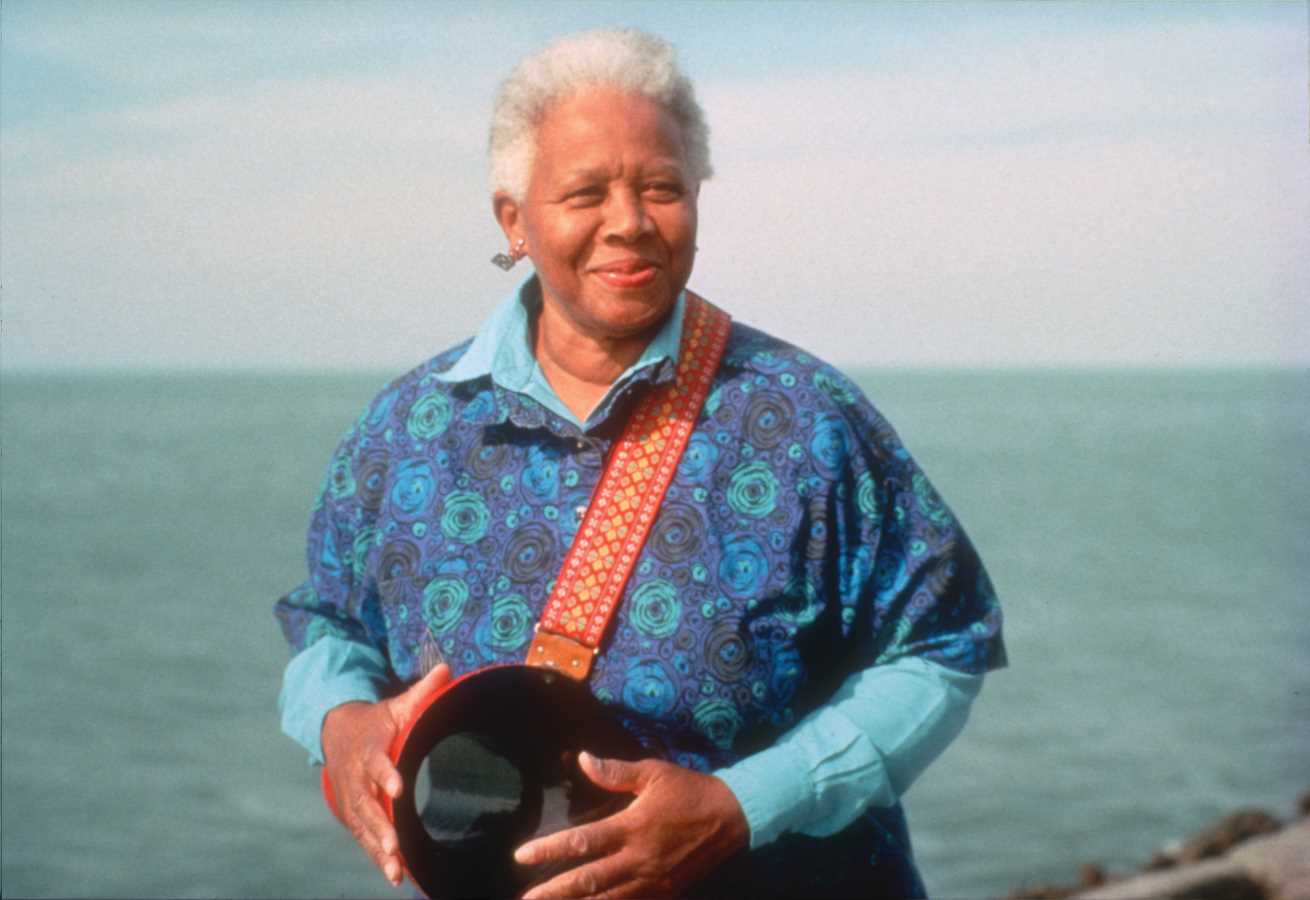
- Listen to Mr. Greg and Cass McCombs’s new single, “Sweet Ella Jenkins” (a tribute song).
- As students listen, encourage them to gently tap the steady beat and think about who Ella Jenkins might be.
- After listening, gather the students’ ideas.
- Next, share some basic information with your students about this remarkable woman, who will turn 100 years old this summer (2024)!
- Ella Jenkins is an important singer and teacher who has been recording songs for about 70 years. Some people call her the “First Lady of Children’s Music.” She has performed songs for children on all seven continents! Ella has also appeared on famous TV shows like Mister Rogers’ Neighborhood and Sesame Street. In addition to singing, she plays the guitar, ukulele, and harmonica.
- Tell students that today, they will get to hear some fun songs performed by this incredible lady.
- Optional extension: Read A Life of Song: The Story of Ella Jenkins, a wonderful children’s book by Ty-Juana Taylor.
- Optional extension: Learn more about Ella Jenkins by watching this short video from Smithsonian Folkways Recordings. Also, be on the lookout for Tim Ferrin’s documentary on Ella’s remarkable life, Ella Jenkins: We’ll Sing a Song Together.
Sing songs about animals

- Listen to and sing along with the call-and-response song “I Like Animals,” from Ella Jenkins's album Seasons for Singing. First, Ella sings a line, and then the students sing it back. For example, Ella sings, “I like giraffes and lions too. I like the animals in the zoo,” and the students repeat the line.
- Optional musical extension: Encourage the students to keep a student beat while listening (e.g., clap, pat, march, tap).
- After listening and singing, ask students what kinds of animals they like to visit in the zoo or see in the wild and why. They could be reptiles, birds, mammals, land animals, sea creatures, etc. If desired, read a non-fiction book or watch a short documentary about animals to generate more ideas. Write down the types of animals on the board.
- Lead students in a class-modified version of “I Like Animals” that includes the animals that they like best: “I like ___ and ___ too. I like the animals in the zoo.”
- Optional extensions:
- If you play a chordal instrument (e.g., guitar, ukulele), you can accompany them (or, ask your music teacher if they would like to collaborate for this part).
- Students can create a movement/motion to go along with each animal they choose to sing about.
- Listen, sing, jump, climb, growl, and dance to the song “If I Were an Animal,” from from the album My Street Begins at My House. When Ella sings “If I were an animal, you know what I’d do? I’d jump and jump and jump and jump and be a kangaroo,” the students can jump like kangaroos. For the rest of the song, the students can pretend they are animals and move and vocalize like the animals Ella sings about.
- Invite students to complete the sentence: If I were an animal, I would be a ______. Ask each student why they chose their particular animal. Is it because of its sharp tusks or teeth, poisonous venom, night vision, or ability to run, fly, or swim at top speed? What is the animal’s superpower?
- Optional musical extension: Especially if you are in a music classroom, create rhythmic chants with the animal names students choose. For example, you can put four animal names together, spoken in rhythm, to create the chant (e.g., el-e-phant, bear, tur-key, goat). Eventually, these can be refined into rhythmic patterns (repeated ostinati) that you and your students can clap or play on instruments while listening to the song.
- Optional extension: Look at photographs or provide figurines of the animals that students have chosen. Ask them to pay close attention to the different shapes that make up their animal’s body. Ask the students what shapes they see (e.g., a circle head, an oval abdomen, rectangular legs, triangular tusks).
- Optional extension: Have students sculpt their animals out of clay—one shape and body part at a time—remembering to include their most extraordinary attributes, like tusks, spikes, and forked tongues.
- Listen to the song “What Flies?,” from Ella’s album My Street Begins at My House. After listening, ask students if they can think of other insects or animals that fly that are not mentioned in the song (feel free to add student ideas to the end of Ella’s song). Ask if these creatures live in any of the trees they saw on their nature walk (if you also did Lesson 1).
- Optional musical extension: Encourage the students to keep a steady beat while listening (e.g., pat, tap, clap softly).
- Listen and dance to “Come and Dance by the Ocean,” from Ella’s album of the same name. Encourage students to imagine all the different kinds of animals that swim in the ocean and fly above its beautiful waters.
- Optional extension: Invite students to move through space as if they were the animals in the song. Provide scarves and/or costumes if you wish.
- Optional musical extension: Students can sing the melody of the song on words or a neutral syllable (e.g., la, loo).
- Optional musical extension: Ask students if they can identify the percussive/melodic instrument used in this song. This recording presents a great opportunity for the students to learn about a new instrument: The steel pan/drum from Trinidad and Tobago. Look at photographs of the instrument and listen to additional tracks in the Smithsonian Folkways Recordings catalog that include steel pans/drums.
- Read about and discuss different kinds of animal habitats and diets. Ask the students what they think would be the ideal habitat for the animals that they sculpted.
- Make a miniature zoo or a natural habitat out of wooden blocks, loose parts, or recycled materials for the students’ animal sculptures to inhabit.
- Sing “I Like Animals,” again, adding the types of animals that the students sculpted.
- Have students draw fantastical creatures featuring their favorite animal attributes. Perhaps a snake with wings, a furry alligator, or a horse with eagle talons and walrus tusks?
- Have a classroom discussion about the kinds of creatures that live or spend time in trees.
- Record the students singing “I Like Animals” with their own added lyrics and share it with the students’ families: “I like ___ and ___ too. I like the animals in the zoo.”
- If you are an early childhood educator, team up with your music educator to incorporate your version of this song into a school performance. They could also help you add accompaniment (e.g., guitar) to the previous suggestion.
- Can students explain who Ella Jenkins is and why her music is important?
- Can students echo Ella, using their singing voices?
- Can students describe, draw, and/or sculpt attributes of their favorite animal?
- Can students identify animals that live at the zoo and in/around the ocean?
- Can students describe ideal habitats for different types of animals?
- Can students explore Ella’s songs through playing classroom instruments and creative movement?
- Can students create their own lyrics to a familiar tune?
- Can students demonstrate a steady beat while listening to recorded music?
Explore a song about insects
Explore a song about ocean animals
Extensions:
Assessment:


